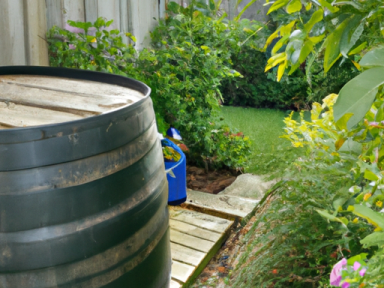Rainwater Harvesting for Your Garden
If you’re concerned about the state of the world and the possibility of a crisis or disaster, then it’s essential to be prepared for any situation that may arise. One area that is often overlooked in preparedness plans is a sustainable water source for your garden. In times of crisis, access to clean water for watering your plants can become a significant challenge.
Rainwater harvesting is a traditional method that allows you to collect and store rainwater for later use. It’s a simple and effective way to reduce your reliance on traditional water sources and ensure that your garden thrives no matter what the future may hold. By setting up a rainwater harvesting system, you can make your garden self-sufficient and sustainable even in the face of uncertainty.
Setting Up Your Rainwater Harvesting System
Here are the steps to set up your rainwater harvesting system:
- Research Local Regulations: Before you begin collecting rainwater, it’s essential to check your local regulations. Some areas may have restrictions or requirements for rainwater harvesting.
- Choose the Right Collection System: There are various types of rainwater collection systems available, such as rain barrels or cisterns. Consider the size of your garden and the amount of rainfall in your area to determine the appropriate system for your needs.
- Select an Ideal Collection Area: Position your collection system under a downspout or on a location where rainwater naturally accumulates. This will maximize the amount of water you can collect.
- Add a Filter: To ensure the water is clean and free from debris, install a filter at the entry point of your collection system. This will prevent clogs and improve the quality of the harvested water.
- Install a Diverter: A diverter allows you to direct rainwater to either the collection system or the regular drainage system. This is useful during heavy rainfall when your collection system may reach capacity.
- Use Overflow Systems: If your collection system fills up, it’s essential to have an overflow system in place to prevent flooding. This could be as simple as redirecting water through an additional pipe or hose.
- Proper Maintenance: Regularly inspect and clean your collection system to ensure it functions optimally. Remove any debris or dead leaves that may clog the system and compromise water flow.
The Benefits of Rainwater Harvesting
Rainwater harvesting offers numerous benefits, especially in times of crisis:
- Sustainability: By using rainwater, you can reduce your reliance on traditional water sources, which may become scarce during a crisis.
- Cost-Effective: Harvesting rainwater can save you money on water bills, especially in areas where water is expensive.
- Chemical-Free: Rainwater is free from the chemicals and additives commonly found in tap water, making it better for your plants and the environment.
- Self-Reliance: Having a sustainable water source for your garden allows you to maintain self-reliance and independence, regardless of external circumstances.
- Drought Resistance: During periods of drought, your rainwater collection system can help keep your garden thriving when traditional water sources are limited.
By implementing a rainwater harvesting system, you are taking a proactive step towards self-reliance and preparedness. Don’t wait for a crisis to strike; start preparing today. Your garden and your future self will thank you.




GIPHY App Key not set. Please check settings